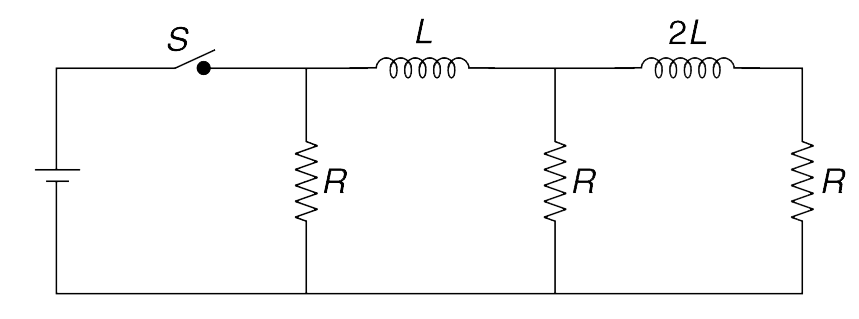There is no charge on 3F capacitor when .S. is open. Much heat (in Joule) is developed in circuit after .S. is closed ?

The correct Answer is:6
Topper's Solved these Questions
- CAPACITORS BOOK - AAKASH SERIESCHAPTER - CAPACITORS EXERCISE - PRACTICE SHEET (EXERCISE - IV) (LEVEL - I (MAIN) (Straight Objective Type Questions )
11 Videos
- CAPACITORS BOOK - AAKASH SERIESCHAPTER - CAPACITORS EXERCISE - PRACTICE SHEET (EXERCISE - IV) (LEVEL - II (ADVANCED) (Straight Objective Type Questions )
5 Videos
- CAPACITORS BOOK - AAKASH SERIESCHAPTER - CAPACITORS EXERCISE - PRACTICE SHEET (EXERCISE - III) (LEVEL - II (ADVANCED)) (Matrix Matching Type Questions)
1 Videos
- ATOMSBOOK - AAKASH SERIESCHAPTER - ATOMSEXERCISE - PRACTICE EXERCISE
21 Videos
- COMMUNICATION SYSTEM BOOK - AAKASH SERIESCHAPTER - COMMUNICATION SYSTEM EXERCISE - LECTURE SHEET (LEVEL - I) (MAIN) (EXERCISE - IV) (Straight Objective & More than one Correct Answer Type Questions)
20 Videos
Similar Questions
There is no charge on 3F capacitor when .S. is open.How Much heat (in Joule) is developed in circuit after .S. is closed ?

View SolutionIn the circuit shown in figure, the current through each resistor is I. Find the currents through the resistors immediately after the switch ‘S’ is opened. How much heat will get dissipated in the circuit after thw switch is opened ?

View Solution
Knowledge Check
In the circuit shown in the figure, the capacitor C is charged to a potential Vo. The heat generated in the circuit when the switch S is closed, is
ACV20B2CV20C4CV20D8CV20n the circuit shown in the figure, the capacitor C is charged to a potential Vo The heat generated and charge flow, in the circuit to when the switch S is closed, is
 A△q=2CVoB△H=4CVoC△q=4CVoD△H=8CVo
A△q=2CVoB△H=4CVoC△q=4CVoD△H=8CVo
Consider the situation shown in the figure. The switch S is open for a long time and then closed and again steady state reached then

(a) Find the charge flown through the battery after the switch S is closed.
(b) Find the charge flown through the switch S from B to A.
(c) Find the work done by the battery after the switch S is closed.
(d) Find the change in energy stored in the system of capacitors.
(e) Find the heat developed in the system after the switch S is closed.
View SolutionConsider the situation shown in the figure. The switch S is open for a long time and then closed and again steady state reached then

(a) Find the charge flown through the battery after the switch S is closed.
(b) Find the charge flown through the switch S from B to A.
(c) Find the work done by the battery after the switch S is closed.
(d) Find the change in energy stored in the system of capacitors.
(e) Find the heat developed in the system after the switch S is closed.
View SolutionThe capacitors in are initially uncharged and are connected as in the diagram with switch S open. The applied potential difference is Vab=+360V.
 .
.
a. What is the potential difference Vcd
b What is the potential difference across each capacitor after switch S is closed?
c. How much charge will flow through the switch after it is closed?
View SolutionThe capacitors in are initially uncharged and are cannected as in the diagram with switch S open. The applied potential differnce is Vab=+360V.
 .
.
a. What is the potential differnce Vcd
b What is the potential deffernce across each capacitor afrer switch S is closed?
c. How much charge will flow through the awitch after it is closed?
View Solutionn the circuit shown in the figure, the capacitor C is charged to a potential Vo The heat generated and charge flow, in the circuit to when the switch S is closed, is

View SolutionAs shown in diagram initial charge on capacitor is zreo . Now switch S1 is closed & it remains closed for a long time but S2 remains open . Now switch S1 is opened & switch S2 is closed at t=0, then after closing the switch S2 :

View Solution
